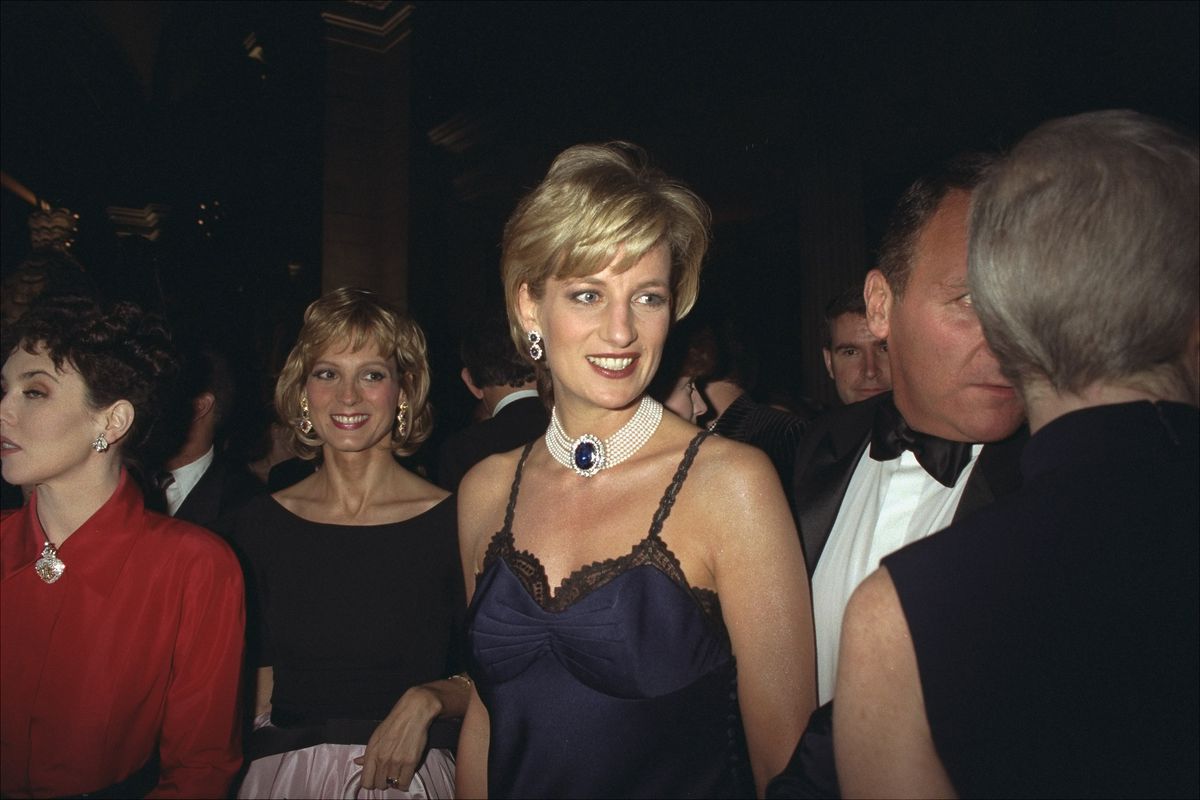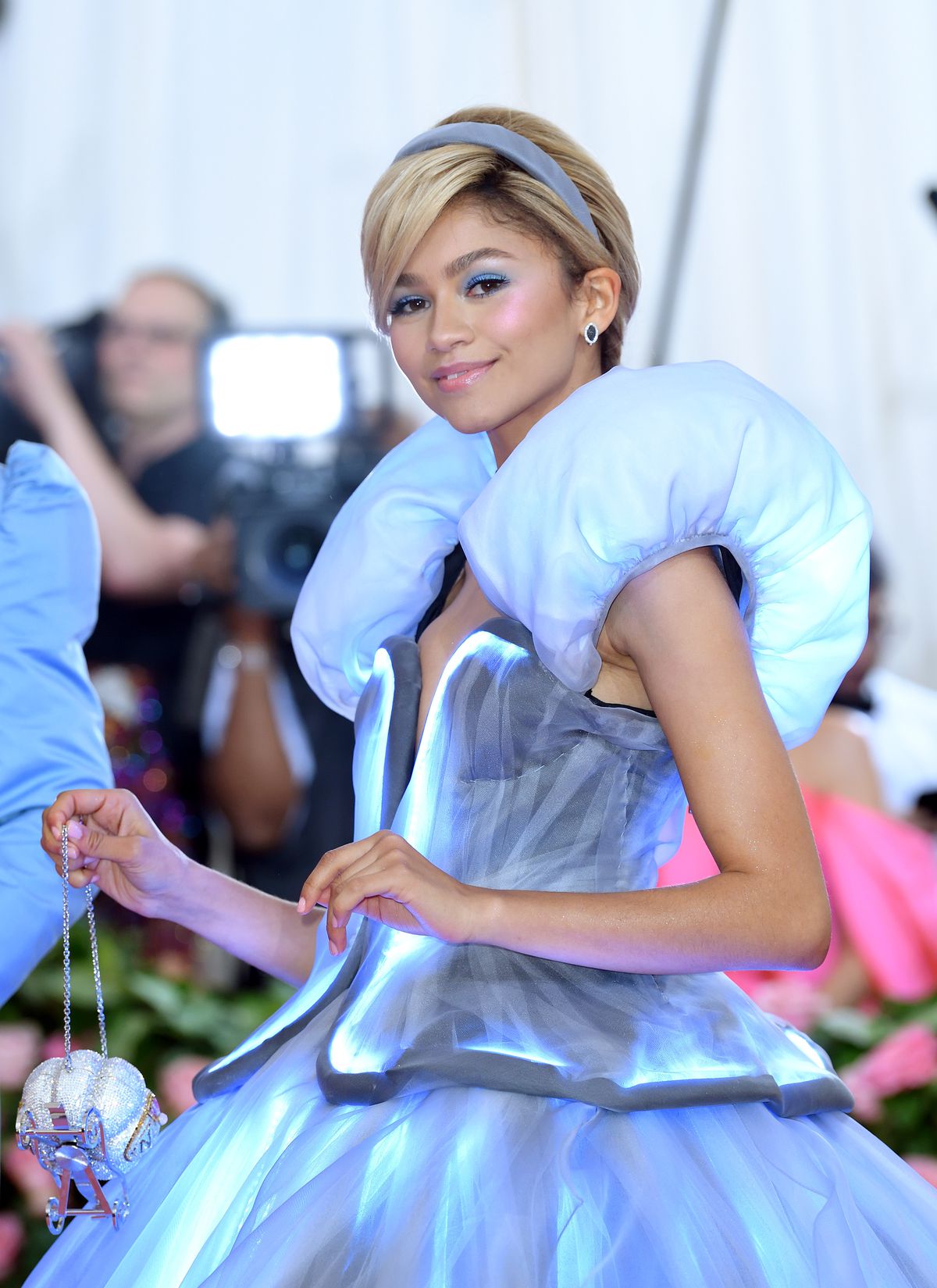May 6, 2024:
On Monday night, some of the biggest celebrities in the country, dressed in their finest and most outrageous couture, will assemble at the steps of New York City’s Metropolitan Museum of Art for the biggest red carpet event of the year. They’ll enter the museum for a high-profile celebration of fashion — sponsored by TikTok this year — that remains entirely out of sight of the public’s gaze, so that all we see will be the arrival of the beautiful and wealthy. This is the Met Gala, and for an event that is theoretically just for fashion nerds and doesn’t even get televised inside, it has a remarkable cultural cachet.
The Gala, which falls on the first Monday of May, purportedly celebrates the Anna Wintour Costume Center’s keystone exhibit every year. It’s overseen by the Center’s eponymous queen: Vogue editor-in-chief Anna Wintour. This year, the exhibit is called “Sleeping Beauties: Reawakening Fashion” and features some of the museum’s oldest and most fragile garments. Guests have accordingly been asked to follow the dress code “Garden of Time,” after a 1962 short story by J.G. Ballard, with moody florals, clock motifs, and even outstanding archival pieces all expected to fit the theme.
Wintour notoriously guards the guest list, but Zendaya, Jennifer Lopez, Bad Bunny, and Chris Hemsworth are all celebrity co-chairs of the party. This year, exploding protests over the war in Gaza and a possible strike by Condé Nast workers also threatens to cast a shadow on the rarefied gathering.
When the Met Gala was first instituted in 1948, it would not have boasted such an A-list roster of hosts, nor such a trendy corporate sponsor (albeit one currently in crisis). The Gala has always been glamorous, but it used to be a local event, primarily a showcase for the society ladies of the Upper East Side. It took decades of careful strategizing and alliance-building with Hollywood to make the Met Gala the pop cultural phenomenon it is today.
Now, the Met Gala shines because it is an unparalleled occasion for celebrity image-building. It is a showcase for both the illusion of accessibility and unreachable glamour at the heart of modern celebrity.
Here’s how it got there.

The Met’s Costume Institute was born out of the Museum of Costume Art, a library devoted to the art of theatrical costumes. In 1946, Lord & Taylor president Dorothy Shaver decided to bring the collection to the Met. Fashion, she felt, needed the cultural power that comes from allying with a major museum. It needed its history preserved and its present recognized to be respected as a major and vital art form. The Met agreed to take the collection — with the caveat that the American fashion industry would be responsible for raising the funds for the Costume Institute’s entire annual operating budget. The Met Gala was conceived out of this grim necessity.
At the time, the party was planned by publicist Eleanor Lambert, and it didn’t even take place at the Met. It was a midnight breakfast hosted at Manhattan institutions like the Waldorf Astoria, Central Park, and the Rainbow Room. It was a glamorous affair, but it was for local society and fashion insiders only.
In 1974, Diana Vreeland arrived at the Met as special consultant for the Costume Institute from Vogue. There, she had been editor-in-chief and was fired, according to rumor, for refusing to mind her budget. Rumor also had it that New York society royalty Jacqueline Kennedy Onassis and Babe Paley campaigned for her to take the new post.
Vreeland brought with her a new edge. She introduced the concept of linking the gala to an Institute exhibit via a theme, the first one being “The World of Balenciaga.” Her parties were lavish and romantic. “There was evocative music and sometimes even fragrance was pumped into the air,” so that “regardless of the fashions being presented, it always felt like a delicious opium den,” recalled designer Steven Stolman in Town and Country in 2018.
The opium was sometimes close to literal. New York magazine reported in 2005 that Vreeland liked to use a signature perfume in the galleries for each party, and for a 1980 exhibit on China, Vreeland scented the air with the YSL eau de toilette Opium. When guests complained, she explained that the fragrance was needed to create the appropriate air of “languor.”
Along with instituting the iconic theme, Vreeland first brought celebrities to the Met Gala. Under her watch, major popular artists including Andy Warhol, Diana Ross, and Cher rubbed shoulders alongside politicians like Henry Kissinger.
After Vreeland’s death in 1989, the fate of the Gala was up in the air. Wintour was brought in to host for the first time in 1995, shortly after her arrival as Vogue’s editor-in-chief. The next year, however, the honors went to Wintour’s rival Elizabeth Tilberis, fellow British expat and editor-in-chief of Harper’s Bazaar. It was Tilberis, in many ways, who created the first modern Gala.
Tilberis’s Met Gala was sponsored by Dior, which had just named a newly ascendant John Galliano artistic director. Diana, Princess of Wales, attended that year, fresh off her divorce from now-King Charles, appearing in a Galliano-designed blue satin slip gown. The look caused a sensation.

The dress, tame by the standards of today, represented Diana freeing herself from the strictures of royal life with a slinky, negligée-inspired look that surely would have been frowned upon by Queen Elizabeth.
For Diana, the gown was a piece of image-making that allowed her to make a statement without having to say a word. For Galliano and Dior, it proved their cultural relevancy and their ability to make clothes that spoke for the wearer. For the Met Gala itself, the moment was a breakthrough. It showed how important the Met could be when it came to both fashion and celebrity: a place where two symbiotic institutions could meet and be celebrated in the best possible light.

After Tilberis died of cancer in 1999, Anna Wintour took over the Met Gala on a permanent basis. And Anna Wintour understands the value of star power.
Wintour has always had a canny sense of how closely fashion and celebrity are intertwined, and how much each depends upon the other. Under her reign, the cover stars of Vogue went from models to actresses. The Met Gala has followed suit. It’s become a coveted celebrity ticket — not least because going to the Met Gala and, ideally, serving as a co-host gives you a better shot of landing that Vogue cover. Wintour also makes sure that she and the Gala retain control over just how all those celebrities make their fashion statements. Frequently, she’s the one who matches celebrities with designers.
You can track the slow evolution of the Met Gala brand under Wintour’s watch. In 2005, a mere six years into the Wintour era and less than a decade after Diana’s newsmaking moment, New York magazine allowed that Wintour’s camp “like[d] to think of the Costume Institute Ball, held this year on May 2, as a sort of Oscars for the East Coast.” By 2019, 20 years into Wintour’s reign, that nascent ambition was now conventional wisdom. The Sydney Morning Herald declared the Met “the fashion Oscars” without irony.
Wintour was helped along in her quest for relevance by the advent of streaming video and social media, both of which helped reinvigorate red carpet coverage. It was common now for pop culture die-hards to follow along on the internet with celebrity arrivals at major award shows and events, and to share their opinions of the fashion on Twitter and Instagram. Celebrities add to the intimacy of the affair by letting viewers into their prep process in streams and Instagram stories.
If modern technology is central to the Gala’s relevance, it also provides a venue for Wintour to show off the Gala as a financial powerhouse. Every year the Gala has a new heavyweight corporate sponsor, frequently from the tech sphere. (This year’s is TikTok; in the past they’ve included Instagram, Apple, and Amazon.) It still makes enough money to provide the Costume Center’s entire annual operating budget. Last year, the gala brought in almost $22 million, with tickets selling for $75,000 each and tables for brands to buy starting at $350,000.

Karwai Tang/Getty Images

Mike Coppola/Getty Images

NDZ/Star Max/GC Images
Kim Kardashian in Marilyn Monroe’s gown at the 2022 Met Gala.
The Met Gala is now the event where celebrities come to reveal a new image or refine an old one, and where the public follows along on the internet with bated breath. Zendaya announced her transition from Disney star to adult actress by acting out a Cinderella transformation on the Met steps in 2019. Rihanna proved she had the fashion cred to read a theme with nuance and the charisma necessary to pull off a dramatic look when she showed up to the 2015 Met Gala, themed to the influence of Chinese fashion on the West, in an enormous imperial yellow fur cape from Chinese couturier Guo Pei. Kim Kardashian built parallels between herself and Marilyn Monroe when she arrived at the 2022 Gala in Marilyn’s iconic “Happy Birthday, Mr. President” dress.
The Met Gala continues to fascinate in part because of the alchemy Wintour has created: an assemblage of dozens of celebrities at the height of their fame, taking full advantage of fashion as an art form for image-making. Yet at the same time, the Gala remains a highly alluring mystery. Only Vogue is allowed to take photos inside the party, with the occasional highly curated exception (many attendees have made a tradition of bathroom selfies, where we see a Mad Libs-y melange of A-listers that only add to the party’s mystique). The event itself is not televised. It is not livestreamed. It is not accessible to anyone who is not explicitly invited, which includes most of us.
The Gala is thus both highly visible and still a black box — no small feat in an age of overexposure. It allows celebrities to speak to their public without words and then vanish off again into the night, unknowable and unreachable, the way almost nothing else in the social media era does.
Sometimes, though, the heady, decadent fantasy of the Met Gala can become a liability. This year, protests over the war in Gaza are raging across the city as the museum prepares for the Gala, with police arresting dozens of student activists on college campuses. Meanwhile, the Condé Nast union, locked in a bitter contract dispute with company management, is threatening one of Condé’s most lavish showcases with the possibility of a strike on the day of the Gala. Since Condé Nast includes Vogue, the potential for disarray at the Gala itself is high. It remains to be seen whether the public can remain enamored with celebrity opulence when real-world concerns are just outside, waiting to crash the party.